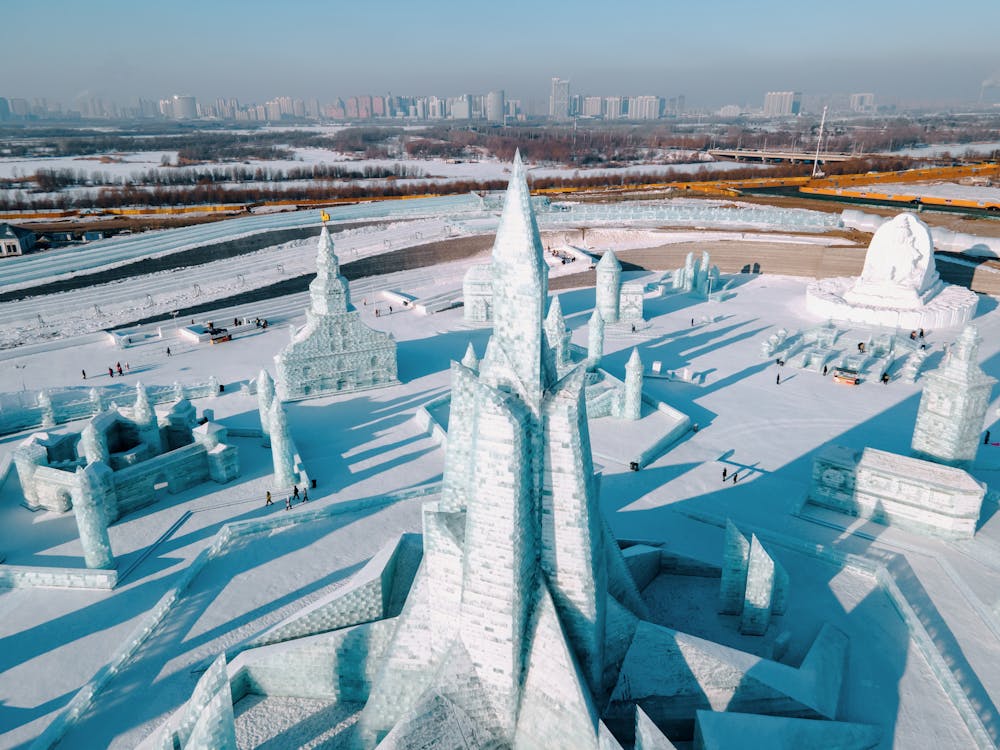Chicago, a city known for its stunning skyline and architectural marvels, has a rich history deeply intertwined with its buildings. From towering skyscrapers to historic landmarks, the city’s architecture tells the story of its growth and evolution over the years. In this article, we embark on a journey to discover the oldest buildings in Chicago, each with its own unique tale to share. So, fasten your seatbelts as we step back in time and explore the architectural treasures that have stood the test of time.
Chicago’s architectural landscape is a captivating tapestry of history, culture, and innovation. From the moment settlers arrived, the city began its transformation into the sprawling metropolis we know today. This article delves into the oldest buildings in Chicago, shedding light on their historical significance and enduring charm.

Kent Zhong
The Birth of Chicago’s Architectural Landscape
As Chicago rose from the swamps of Lake Michigan in the 19th century, its architectural journey began. The Great Chicago Fire of 1871, although devastating, led to the city’s rebirth, offering a blank canvas for architects to showcase their brilliance. Among the survivors of the fire is a true icon: the Chicago Water Tower.
The Legacy of the Chicago Water Tower
The Chicago Water Tower stands as a symbol of resilience and endurance. Built in 1869, it miraculously survived the inferno, becoming a testament to the city’s ability to rise from ashes. This limestone structure with its ornate design is a living witness to Chicago’s history and a reminder of its architectural tenacity.
Reliving History at the Clarke House Museum
Traveling back in time, we arrive at the Clarke House Museum, Chicago’s oldest surviving residence. Constructed in 1836, this Greek Revival gem offers a glimpse into the lives of Chicago’s early inhabitants. Walking through its corridors is like stepping into a time capsule, preserving the essence of the city’s past.
A Glimpse into the Past: The Holy Name Cathedral
The Holy Name Cathedral, a breathtaking example of Gothic Revival architecture, was dedicated in 1875. Its towering spires and intricate façade draw visitors into a realm of spiritual beauty. As you stand within its hallowed halls, you can’t help but feel the weight of history and devotion that this cathedral holds.
From Warehouse to Luxury: The Silversmith Hotel
The Silversmith Hotel, once a jewelry shop and warehouse, now stands as a luxurious testament to adaptive reuse. This building, dating back to the 19th century, seamlessly combines its historic elements with modern amenities, offering guests a glimpse of the past while enjoying contemporary comforts.
Historic Charm: The Second Presbyterian Church
The Second Presbyterian Church, founded in 1842, is a beacon of historical and architectural significance. Its stunning Gothic architecture and intricate stained glass windows narrate stories of faith and community. This church stands not only as a place of worship but also as a work of art.
Victorian Elegance: Glessner House
The Glessner House, designed by renowned architect Henry Hobson Richardson in 1887, is a masterpiece of Victorian architecture. This urban oasis with its Romanesque style and artistic details showcases the opulence of a bygone era. Walking through its rooms is like stepping into the high society of late 19th-century Chicago.
Innovative Design: The Manhattan Building
In the heart of Chicago’s Loop stands the Manhattan Building, a skyscraper that revolutionized urban architecture. Built in 1891, it was one of the first structures to utilize steel framing, setting new standards for construction worldwide. Its innovative design not only transformed the city’s skyline but also marked a significant milestone in the evolution of Buildings in the City. The Manhattan Building’s forward-thinking approach paved the way for the integration of modern materials and techniques, shaping the way future buildings in the city would be constructed.
The Rookery Building: Where History and Modernity Converge
A true marvel of architecture, the Rookery Building seamlessly blends historic grandeur with modern ingenuity. Designed by Daniel Burnham and John Root, it was completed in 1888. Its iconic light-filled atrium and intricate façade are a testament to Chicago’s ability to embrace both tradition and progress.
Guardians of the Sky: The Marquette Building
The Marquette Building, erected in 1895, stands as a guardian of Chicago’s architectural heritage. With its stunning Beaux-Arts style and intricate terra cotta detailing, it commands attention from all who pass by. This building serves as a reminder of the city’s rich history and its dedication to preserving its architectural legacy.

Carlos Eduardo de Meneses
A Tribute to Art: The Fine Arts Building
For over a century, the Fine Arts Building has been a haven for artists and creatives. Built in 1885, its bohemian spirit and artistic energy are palpable. This architectural gem not only houses studios and galleries but also stands as a testament to Chicago’s commitment to fostering artistic expression.
The Majestic Auditorium Building
The Auditorium Building, completed in 1889, is a marvel of design and engineering. A collaboration between architect Louis Sullivan and engineer Dankmar Adler, it was the first building to combine a theater, hotel, and offices under one roof. Its acoustics and architectural details remain awe-inspiring to this day.
Timeless Beauty: The Chicago Cultural Center
Our journey through Chicago’s architectural history culminates at the Chicago Cultural Center. Built in 1897 as the city’s first public library, it showcases stunning Beaux-Arts architecture. With its Tiffany stained glass domes and ornate mosaics, this building is a celebration of art, culture, and the enduring spirit of Chicago.
Chicago’s oldest buildings are not merely structures made of brick and stone; they are living witnesses to the city’s journey through time. Each edifice tells a story of resilience, innovation, and artistic expression. As we traverse the streets of Chicago, we’re reminded that every building is a chapter in the city’s rich narrative.
